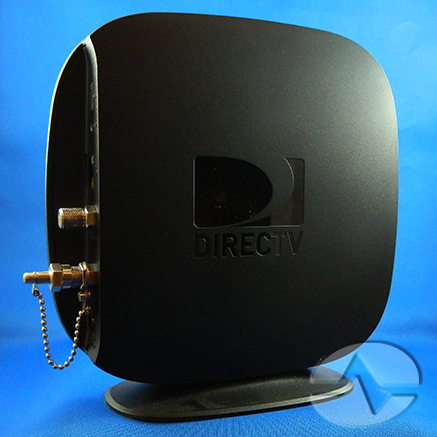DIRECTV’s wireless Genie Mini Client solves a lot of problems. You can be up to 50 feet from a coaxial cable with five walls between you and the signal remains nice and strong. That’s enough to cover most homes, but let’s suppose for a second that you’re one of those lucky folks with a three-story, 6,000 square foot home. In a case like that, even the combination of a wireless video bridge and the 150-cable-foot run from the SWM may not be enough. What can you do?
DIRECTV specs say that you can use more than one wireless video bridge. I’ve heard that you can use up to four, but official documentation just says “more than one wireless video bridge” may be used. There’s a limit of 16 devices on any coax network, so let’s say you’re maxing that out with receivers and other hardware… 8 clients, a Genie and a DECA broadband means that you could potentially have six bridges. That’s probably a bit ridiculous.
On the other hand, with a little planning you could actually service 9 TVs with 400′ between the furthest points. No guarantee that it would work, but it could. Put the Genie and a splitter at the exact center and run 150 cable feet in either direction. Put a wireless video bridge at each end and there’s another 50 feet in either direction. There would probably be some issues with latency and certain tests would fail because the devices on the far ends wouldn’t communicate with each other, but if they were all Genie clients then the only really required communication would be with the Genie DVR.
Another option for a multi-story building would be to put one wireless video bridge on each floor and then connect clients to the bridges on those floors, but again you’d have to be careful. There’s no real way to pick which bridge you connect to so for the sake of safety you’d probably only want one bridge plugged in at once while you were getting the clients set up. Once they’re linked to a bridge, they stay linked to that specific bridge forever unless you reset the client to factory specs.
The point here is that the wireless video bridges give you some flexibility in planning your system, especially when you have issues due to very long cable runs. With care, you should be able to accommodate almost any residential setup.

